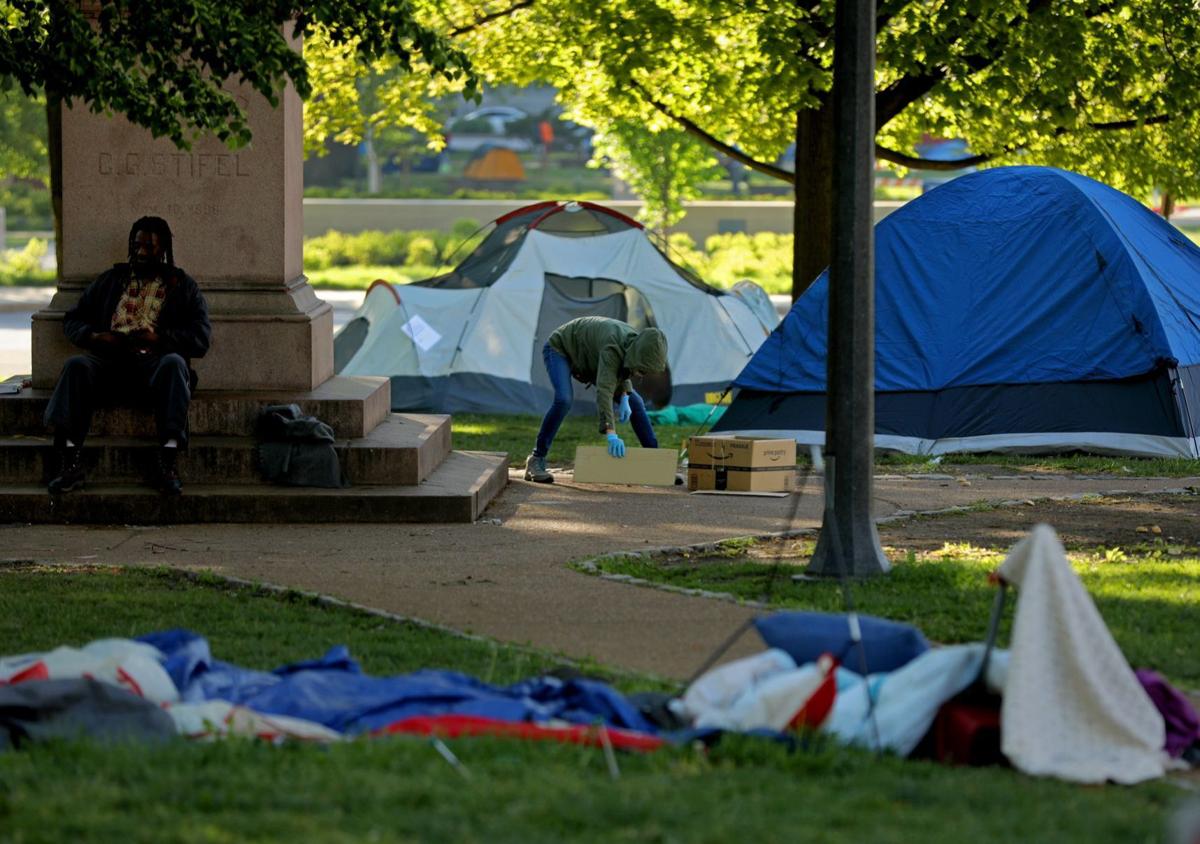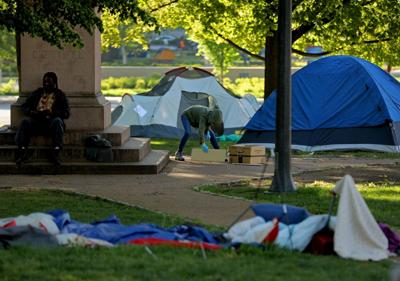President Donald Trump toward Gov. Mike Parson and asked a question.
Parson, the Republican governor of Missouri, was sitting at a seat of honor, just to the left of first lady Melania Trump. Ostensibly, the Tuesday gathering at the White House around the big table where hardly anybody wore a mask was about urging local school districts to open their doors to students this fall, pressing ahead as though the coronavirus pandemic hadnŌĆÖt taken a massive turn for the worse in recent weeks, particularly in Florida, Texas and Arizona.
Really, like most White House meetings, this was mostly an opportunity for the guests to say nice things about the president in front of the cameras, and, of course, Parson obliged.
About that question.
People are also reading…
ŌĆ£You wonŌĆÖt be changing the name of 51║┌┴Ž, will you?ŌĆØ the president asked.
Trump was being flippant, as he often is, but there is a story behind the question. Protesters in 51║┌┴Ž had recently held a rally calling for the removal of the statue of King Louis IX on Art Hill in Forest Park. Amid the nationwide calls for removal of statues and names ŌĆö including military bases ŌĆö that honor Confederate generals, the movement for the country to reckon with its history includes criticism of many other historical figures and names, like the NFLŌĆÖs Washington Redskins, and buildings and other institutions named after people whose history is rooted in slavery. King Louis IX, a saint in the Roman Catholic Church, has a troubling history of anti-Semitism and Islamophobia.
ŌĆ£No,ŌĆØ Parson responded to the president, ŌĆ£we will not be doing that.ŌĆØ
ParsonŌĆÖs probably right, even if he doesnŌĆÖt necessarily have a say in the matter.
But the question got me thinking. If we did change the name of 51║┌┴Ž, what would it be?
My first instinct is to grab one of those street names many of us mispronounce, like Gravois or Chouteau, but the modern context of the coronavirus pandemic provides another answer that is also deeply rooted in the history of 51║┌┴Ž.
Eviction City.
On the day Parson was at the White House singing the presidentŌĆÖs praises as coronavirus cases were surging to new records, and the world-leading death toll in the U.S. continued to climb above 130,000, activists in 51║┌┴Ž, led by the STL Housing Defense Collective, were protesting the resumption of court-ordered evictions in the city.
Evictions had been put on hold during the pandemic, but the circuit court ended the moratorium this month. Meanwhile, unemployment is still surging, and the potential for creating a whole new class of people who end up unhoused and on the street is very real, activists said. They are seeking a new 120-day moratorium on evictions and utility shut-offs, with the city using federal CARES Act money to help renters and landlords alike.
ItŌĆÖs not just people living paycheck to paycheck who are facing eviction in 51║┌┴Ž.
Just a week earlier, Mayor Lyda KrewsonŌĆÖs administration started eviction proceedings against at least its third tent encampment of homeless people downtown, going against guidance from the Centers for Disease Control and Prevention that said it was safer to leave such tent cities in place during the pandemic. In fact, KrewsonŌĆÖs administration said it would do just that when faced with a tent city across from City Hall in Poelker Park and further west along Market Street. But it switched course and eventually kicked the homeless people out, putting some of them up in a new homeless shelter funded with CARES Act money.
ŌĆ£The cityŌĆÖs repeated attempts to displace the unhoused during this pandemic, in direct contravention of CDC guidelines, demonstrates how little the city cares about supporting the unhoused,ŌĆØ said John Bonacorsi, a Skadden Fellow and staff attorney at the nonprofit law firm .
The city is clearing encampments under interstates at the request of the Missouri Department of Transportation.
In late June, it was a camp in Soulard, behind Way of Life Church. This week, a tent encampment under Interstate 44 near the Arch faces a weekend eviction deadline.
That location is sort of appropriate for Eviction City.
The Arch is built on the site of the . In the 1930s the cityŌĆÖs riverfront was a dense neighborhood, primarily occupied by African Americans, who lived there and had businesses. A fraudulent vote allowed the city to condemn the neighborhood and destroy the 486 buildings there.
It was the cityŌĆÖs first mass eviction of Black residents, but it wouldnŌĆÖt be the last.
Eviction City revved up its engines this week, as the pandemic was continuing, and cases were on the rise again in Missouri. Move the homeless out of sight, the city says. Clear out the renters who donŌĆÖt have jobs or income.
There hasnŌĆÖt been a rush on local evictions yet, according to , which tracks evictions nationwide, but lawyers and activists fear that come late summer or early fall, if there isnŌĆÖt more federal unemployment aid or other sorts of eviction moratoriums, disaster awaits.
Before COVID-19 hit, the 51║┌┴Ž region was already facing an eviction catastrophe, as one really bad landlord, T.E.H. Realty, was kicking residents to the curb even without providing heat or sanitary conditions in hundreds of apartment units in the city and county.
That problem hasnŌĆÖt been solved, and now the courts are revving up to put more people on the street before the city has even started distributing much of the federal aid it is sitting on.
Eviction City lives.





















